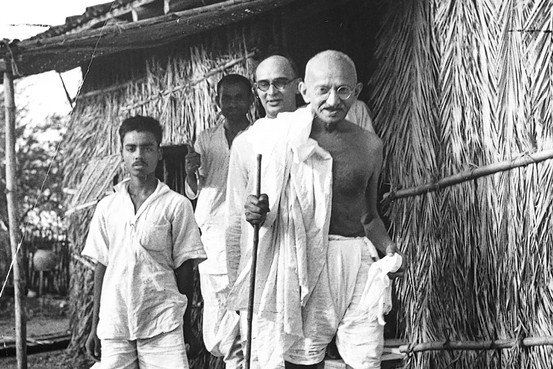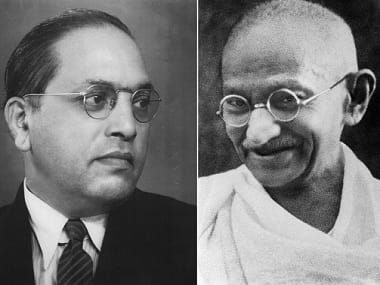PARADIGM SHIFT
Education is the guiding force of any society, its future lies in the hands of its teachers who shape and cultivate the consciousness of students. It is this significant role played by education that makes a young researcher explore the possibilities in Gandhi’s philosophy of education.
By Ritika Chawla is currently working as City Head-Delhi with India School Leadership Institute
It is possibilities to see education in today’s world as a contrast between conventional or the so-called English education and an alternative form based on revolutionary ideas such Nai Talim provided by Mahatma Gandhi. There is a considerable role of education in the making of our identities and worldviews. However, education is quantified through numbers – test scores, pay packages, highest percentages in board examinations, etc. In a country like India where education aims to provide a means to or rather an “escape” to a better life, we have confused literacy with education. Literacy in itself is no education, but being a quantifiable term again, this is what governments and society aspire for. Linked with this, education influenced by the current industrial economy focuses more and more on material wealth with the belief that wealth is prosperity and progress for a country. It encourages fierce competition instead of cooperation, along with specialization of skills instead of holistic understanding.
It is said that the focus of institutional education or schooling is to pave a way out of poverty for students in developing countries such as India. But this is just one sided story. We should not forget that the other side of education is the role it is playing in separating of children from nature, from their family and community, and enforcement of a sedentary lifestyle, etc. Schooling today is about division of knowledge into academics subjects instead of being a holistic understanding of the world around us, and it further emphasizes text-based rather than experience-based learning. With stress on competitions and ranks, the schooling system has set a mould, and those students who don’t fit into it classified as “failures”. Whereas the real aim of education ought to be to built on equitable and sustainable society. And this hope is based on the revolutionary ideas of education such as Nai Talim.
The idea of Nai Talim was given by Mahatma Gandhi many decades before we attained independence from the British government.
Also known as Basic education for all, Nai Talim was meant for children between the ages of 6 to 14 years. Based on the principle that knowledge and work are inseparable, this radical educational philosophy aimed at providing knowledge through praxis, and bringing about all round development of the child. Children were also expected to do activities such as cooking and cleaning on their own. In such a scenario, the role of the teacher was more of a facilitator and the teacher was also expected to learn from the students. The model was child-centric and not teacher-centric. The curriculum was supposed to be integrated with the productive work being the nucleus from where learning for other subjects could be derived. Nai Talim also spoke about the role of the State and the community. The productive work of the students was to be bought by the State and also help the community in becoming self-reliant. This in turn, as it was thought, made the schools financially self-supporting with the productive work helping to pay the teachers’ salary and other expenses.
It presented a concept of learning that simply could not be fully implemented with the help of textbooks. Of equal, if not more importance, was the freedom it gave the teacher in matters of curriculum. It denied the state the power to decide what teachers to would teach. It gave autonomy to the teacher but it was, above all, a libertarian approach to schooling that transferred power from the state to the village.
{Nai Talim indirectly implied radical restructuring of the society in India, where productive handicrafts were being associated with the lowest groups in the hierarchy of the caste system. Knowledge of the production processes involved in crafts, such as spinning, weaving, leather-work, pottery, metal-work, basket-making and book-binding, etc. had been the job of the lowest strata of the traditional caste-based society. A majority of this strata belonged to the category of ‘untouchables’. India’s own tradition of education as well as the colonial education system had emphasized skills such as literacy and acquisition of knowledge of which the upper castes had a monopoly. Gandhi hoped that Nai Talim would change the opinion that manual work was inferior to mental work. }
Nai Talim came into existence during the Wardha Shiksha Sammelan of 22-23 October 1937. For its implementation, four resolutions were put forward:
Resolution 1: There should be free and compulsory education for 7 years for all children of the country
Resolution 2: This education should be given through the mother tongue
Resolution 3: Education should be centred around a productive work. This should lead to all round development of the child. The work should be chosen keeping the child’s interest and local environment in mind.
Resolution 4: It is hoped that gradually teachers’ salaries would come from the income generated from this productive work
During the Wardha Conference, Gandhi said “What I am going to place before you today is not about a vocation that is going to be imparted alongside education. Now, I wish to say that whatever is taught to children, all of it should be taught necessarily through the medium of a trade or a handicraft.”
This idea of teaching children handicraft or a vocation was attempted to be incorporated in schools through SUPW or Socially Useful Productive Work which was introduced in 1978 by the Ministry of Education with the aim to develop and encourage community working and thinking. It was brought into schools to increase awareness of scientific advancements and develop scientific outlook among students as well as teachers. It was like allowing schools to offer an additional slot in the time-table for students to take up one of the following activities: embroidery and knitting, gardening, cooking, painting, carpentry and other crafts. From my personal experience, as I did take up knitting, cooking and pottery as part of my SUPW curriculum, I felt that it was only looked at as a hobby and the primary objective of developing scientific thought was forgotten. It was just an extra-curricular activity and the teachers too did not develop a community learning environment or scientific methodology for the students.
At present, in the National Curricular Framework (NCF 2005) , there exists a section on “Work And Education”. It is about the participation in productive work which becomes the medium of knowledge acquisition, developing values, and skill formation. According to NCF, placing this at the centre of curriculum will act as a powerful corrective to the ‘bookish’, information-oriented and generally unchallenging character of school education. Also, pedagogical experience in using work is viewed as an effective and critical developmental tool at different stages of childhood and adolescence. Hence, the NCF includes various detailed items such as agriculture, textile, leather and other fibre-based, tools and machines, services, art, music, theatre, health, sports, physical education, community work and social action. There have been various attempts at the implementation of these in schools, but maybe not at level of depth Nai Talim hoped it to be, and these continue to remain “extra-curricular” activities instead of becoming co-curricular.
With changing times, the provision of education in India has drifted into various directions. Today, education is no more a service provided by the government alone; there are other private and non-governmental institutions which have become part of the education system. These institutions have brought in non-traditional or educational alternative thoughts, which are opposing to the mainstream conventional education. This alternative form of education is non-standardized and unconventional in terms of curriculum, pedagogy, assessment, etc. It is more child-centric rather than adult-centric and also looks at training for life-skills, enhancing creativity, and developing a sense of entrepreneurship. There is emphasis on small class sizes, close relationships between students and teachers and a sense of community. Such schools focus on cultivation of moral, emotional, physical, psychological and spiritual aspects of child development. These schools provide a flexible schedule with community involvement and support.
Examples of such institutions are spread across the country: Punvidham Learning Centre (Tamil Nadu), Secmol (Leh), Kalkeri Sangeet Vidyalaya (Karnataka), Aksharnandan School (Pune), School Without Walls (Maharashtra), Imlee Mahua School (Chattisgarh), Digantar (Rajasthan), Vidyodaya (Kochi) and others.
To elaborate further, a school such as Vidyodaya has a social service activities club that seeks to promote the Gandhian values of peace and non-violence. It holds annual activities and conducts programs to help the poor in the surrounding areas. SECMOL and Kalkeri allow students to take decisions democratically for the running of their school. Students of Digantar and Aksharnandan make products to raise funds for their school. The existence of these schools proves that teaching in classrooms alone isn’t the way to be and that Gandhi’s Nai Talim continues to ignite small yet powerful flames for changing the system.
The upsurge of institutional education or schooling in the past few decades has led to destruction of traditional sustainable agricultural and ecological knowledge, breaking up of extended families and communities and devaluation of certain useful traditions, which were vital for the survival of our societies. This push towards urbanization has led to unstained growth and growing inequity in the country, e.g. high urban unemployment rates. In Gandhi’s words, the education system has enslaved the nation. What we need is a paradigm shift. Expecting students to actively participate in farm life, by planting, harvesting, irrigating, building, grazing animals, might sound unrealistic, but it is the critical minimum needed for crucial in saving the loss of valuable local knowledge of ecology, agriculture and sustainability.
To conclude, I would like to quote Ken Robinson. He echoes Gandhi’s ideas on education: “There is not an education system on the planet that teaches dance every day to children the way we teach them mathematics. Why? Why not? I think this is rather important. I think maths is very important but so is dance. Children dance all the time if they’re allowed to, we all do. We all have bodies, don’t we? Truthfully what happens is, as children grow up we start to educate them progressively from the waist up. And then we focus on their heads. And slightly to one side.” Gandhi said, “We will know what type of education to provide if we know what type of society we want”. Maybe it is time to build a society that is more sustainable and equitable.
IMAGE: THE HINDU ARCHIVES
This article is published in The New Leam, March Issue( Vol.2 No.10) and available in print version.
To buy contact us or write at thenewleam@gmail.com
Or visit FlipKart.com
You Liked the article? We’re a non-profit. Support This Endeavour – http://thenewleam.com/?page_id=964














